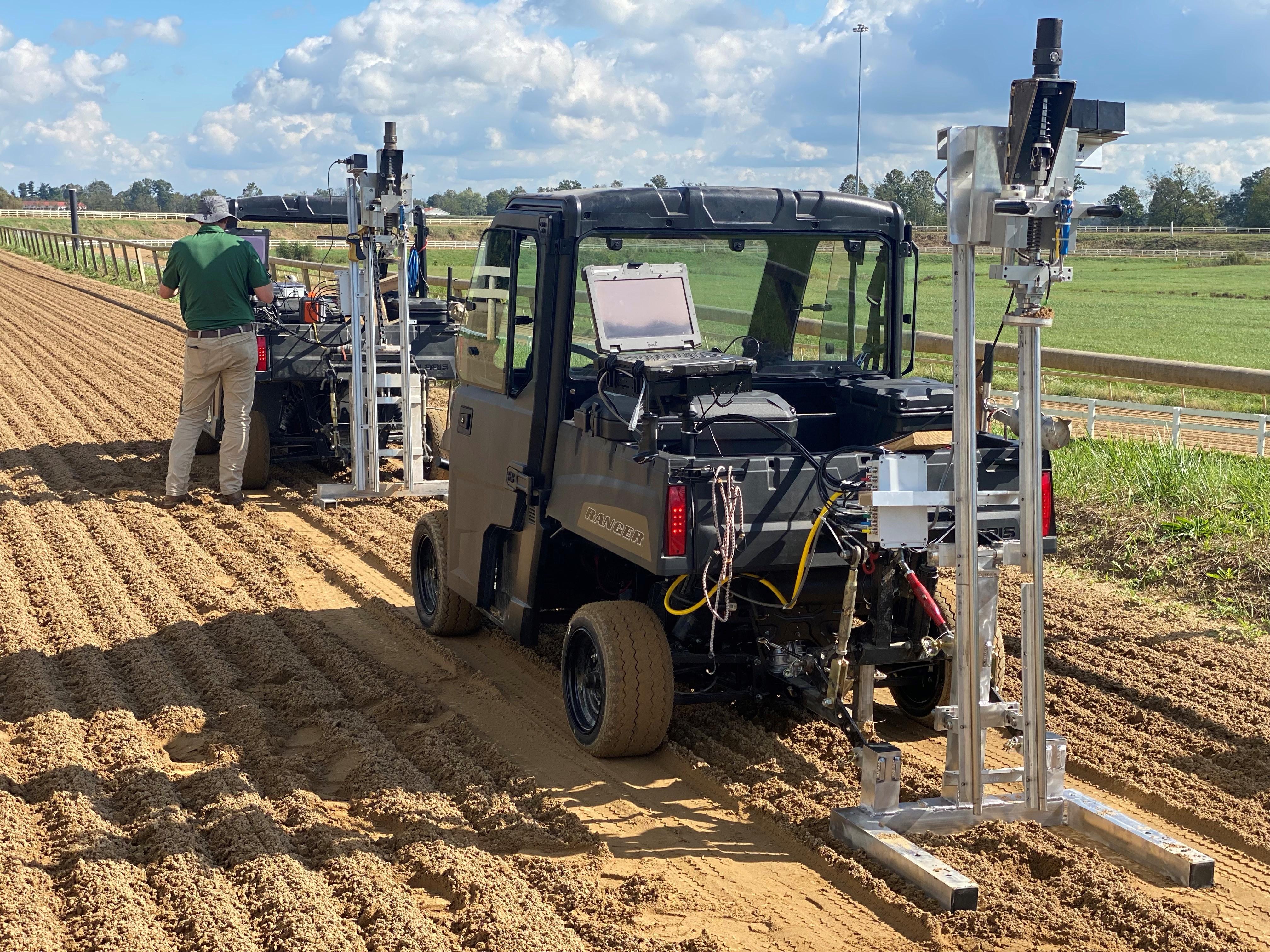Breeders’ Cup 2021: How the RSTL and UK Research Worked to Improve the Del Mar Surfaces

Upgraded Daily Testing, New Database
The best surfaces, whether dirt or turf, perform consistently from day to day, year to year and for every stride of the horse. During the 2021 Breeders’ Cup hosted at Del Mar, the independent non-profit Racing Surfaces Testing Laboratory (RSTL), with its research partner, the University of Kentucky College of Agriculture, Food and Environment, will usher in a new era of standardized measuring protocols and data management that will help improve the consistency of racing surfaces.
The RSTL will use Del Mar as a beta test site during the Breeders’ Cup for its upgraded daily testing, developed in collaboration with UK and new database developed in collaboration with The Jockey Club. More accurate daily testing equipment for both dirt and turf will be combined with real-time data collected from maintenance equipment during racing. Especially in low humidity environments, additional data on the moisture content of the dirt racetrack during the race card can facilitate improved surface consistency.
Moisture, racing and training and equipment traffic all change the track; the RSTL’s Maintenance Quality System mitigates those effects by taking a series of daily and longer-term standard measurements that are added to a database to allow for comparisons between 14 leading North American racetracks and coordination of efforts to minimize adaptation by Breeders’ Cup horses to a new surface.
How the MQS Tests the Surface Before Racing Starts
Biomechanical surface testing, ground penetrating radar and composition testing are conducted before horses are allowed to train or race on a surface to ensure the racetrack is ready for use. During a one- to two-day review period, equipment is inspected, electronic infrastructure is updated and the racing surface is tested.
During biomechanical surface testing a robotic horse is used to replicate the loads and speeds of a Thoroughbred at a gallop. This machine is used to determine if the surface is consistent and provides the same vertical and horizontal loads on the leg as other tracks that participate in the Maintenance Quality System. The comparisons include the Del Mar racetrack, as well as other racetracks used by Breeders’ Cup horses, including New York Racing Authority, Keeneland, Churchill Downs and Santa Anita.
Ground penetrating radar is used to inspect the cushion and base, which supplements grade checks performed by the track maintenance crew. A total of 12 tests are performed on the sand used on the surface to ensure that it is consistent.
How the MQS Tests the Surface During Racing
Measurements taken before racing starts are only part of the effort. Every race day, changes in material and moisture must be controlled. Divots are repaired on the turf course; the dirt track is graded; and real-time weather data is transmitted from the track at 15-minute intervals. Moisture and cushion depth are measured daily on the main track. Daily measurements of moisture and “going” are made on the turf track. These checks ensure the consistency of the maintenance and provide information which can be used for making training and racing decisions.
About Del Mar’s Racing Surfaces and Personnel
Del Mar has two racing surfaces: a one-mile dirt main track and a 7/8th-mile inner turf track. The main track has 85% medium to fine sand and 15% silt and clay. The turf track has a sand profile with fiber reinforcement growing a hybrid Bermuda grass. Two experts work closely to ensure quality racing surfaces on both tracks.
Dennis Moore, racetrack superintendent, is a second-generation racetrack superintendent with 50 years of experience in racing. Leif Dickenson, who oversees the track superintendent, is an agronomist who also has decades of experience on racetracks and other equestrian surfaces. Both Moore and Dickenson were integral to the development of the Maintenance Quality System and have participated since its inception.
During Breeders’ Cup they will be assisted by Kaleb Dempsey, an engineer at the Racing Surfaces Testing Laboratory, and Mick Peterson, a professor within UK’s Department of Biosystems and Agricultural Engineering and co-founder of the Racing Surfaces Testing Laboratory.
Karin Pekarchick, MS, senior extension associate for distance learning in the UK Department of Biosystems and Agricultural Engineering and founder of the UK Female Equestrian Health and Wellness Community of Practice, and Mick Peterson, PhD, professor of biosystems and agricultural engineering in the College of Engineering, provided this information.
